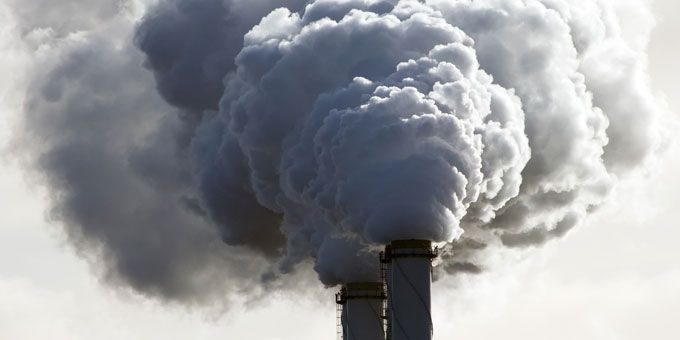As of June 27th, 2019, the UK government became the first major economy in the world to draft legislation pinpointing an end date to carbon emissions.
 Laws Helping to Tackle Carbon Emissions
Laws Helping to Tackle Carbon Emissions

John Hannen
With extreme weather events such as heatwaves and intense flooding causing posing grave danger across the planet, it should come as no surprise that something drastic needed to happen. Having already witnessed a 1 degrees Celsius rise, the failure in tackling carbon emissions is set to lead to a further 2 degrees rise over the course of the next 80 years.
As of June 27th, 2019, the UK government became the first major economy in the world to draft legislation pinpointing an end date to carbon emissions. Net Zero by 2050 builds upon the previous legislation in place which demanded an 80 per cent reduction on the carbon emissions the nation was producing from 1990. Many have suggested that this new aim is rather ambitious however it proves that the country is serious in the battle against climate change.
Everything we do in life has an impact on climate change, from the way we travel to work in the mornings, to the food we indulge in on a daily basis, so understanding what’s being done, and what needs to happen is essential. In this article, off grid gas supplier, Flogas, take a look at the different legislation that been implemented to cut out carbon.
Flogas’ Head of Corporate Affairs and Innovation, David Taylor, said: “With so many premises still relying on high-carbon traditional off-grid fuels like oil – and heating making such a major contribution to current emissions levels – the transition to lower-carbon alternatives is long overdue. LPG is the cleanest, most efficient and effective conventional off-grid fuel, so it is uniquely placed to help reduce emissions immediately.
“Building on this, we see biopropane (or BioLPG) as a hugely significant part of the UK’s renewable future. Produced using biological sources (such as waste, sewage and energy crops), bioLPG is chemically identical to LPG. This means it can be simply ‘dropped in’ to the UK’s existing, comprehensive LPG network – so it will become increasingly important as we strive to meet the UK’s new 2050 net zero deadline.”
Transport
The Road to Zero strategy was initiated in July 2018 and it incorporates the government’s plans to drive down carbon emissions caused by transport. Part of this plan will be encouraging the uptake of zero-emission cars, vans and trucks, as part of the government’s mission to tackle air pollution and deliver cleaner air across the country. Changes such as putting a stop to the sale of conventional petrol and diesel cars and vans by 2040 is one of the most significant ways in which it intends to deliver this plan.
By 2030, the UK government has insinuated that they want to have at least 50 per cent, if not 70 per cent of all new car registrations being ultra-low emission, with vans being targeted at 40 per cent. What this means for the UK is that we’ll begin to see a huge rise in electric charging points as the government throws it weight behind the adoption of electric vehicles (EV).
Although the developments have been taking place at a considerably impressive pace, there have been delays in certain aspects, including the introduction of Clean Air Zones. Most recently, Leeds and Birmingham have experienced delays with their digital vehicle checking tools, which allow drivers to check the type of emissions their cars produce. Delays to the introduction of this software are likely to push back their plans to introduce Clean Air Zones.
The Strategy for Clean Growth
The clean growth strategy is another major part of the UK government’s plan to achieve a completely carbon neutral future. It’s a plan brought into place to help accelerate the pace of ‘clean growth’ by decreasing emissions whilst simultaneously increasing economic growth.
Most notably, the strategy aims to reduce carbon emissions in the six areas that together make up 100% of the UK’s emissions. These areas are as follows:
-
Leading the public sector (2% of UK emissions)
-
Improving efficiency within our homes (13% of UK emissions)
-
Enhancing the benefits and value of our natural resources (15% of UK emissions)
-
Delivering clean, smart, flexible power (21% of UK emissions)
-
Increasing the shift to low-carbon transport (24% of UK emissions)
-
Improving business and industry efficiency (25% of UK emissions)
The government have, in order to make this achievable, committed to introducing processes, systems, and technologies, which are all low carbon, in the most cost-efficient method possible.
Paris Agreement
The Paris agreement was one of the first and perhaps the foundation for all the further, major legislations that were introduced. It saw more than 200 countries take part in the United Nations Framework Convention on Climate Change, resulting in an agreement that strengthened action for a more sustainable, low carbon future. The countries who committed to the agreement, pledged their abidance to stopping temperatures rising by more than 2 degrees above the benchmark of pre-industrial times. A regular five-year review will also take place to monitor progress as well as increased funding to developing countries to help keep them in line with similar national targets.
Sceptics have argued that Britain will not be able to achieve its plans drawn out for 2050 however, the legislation which has been introduced will certainly go a long way in making sure its feasible?
The content & opinions in this article are the author’s and do not necessarily represent the views of AltEnergyMag
Comments (0)
This post does not have any comments. Be the first to leave a comment below.
Featured Product

